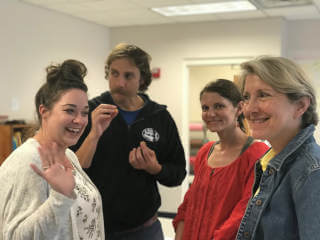The key to improving the caliber of teaching is through critical reflection & conscious action. It is through conscious examination of our teaching experiences that we are able to raise our own levels of awareness as to what is helping and what is hindering learning. It is when we decide how what we just learned from one experience will impact what we are about to experience that we empower ourselves.


Reflection is normally reserved as a term to help teachers become better practitioners. TESOL Trainers, Inc. provides the tools to not only help teachers inform and transform™ their teaching practices but also gives teachers strategies and techniques to help their students become fully aware of their own learning and fully capable of sharing what is helping and hindering their success.
The main goal of this theme is to provide teachers and institutions with the necessary seeds to plant systemic change and the tools to care for them as they grow, adapt, and expand across the curriculum. Giving teachers the tools they need to become reflective teachers is more than explaining the benefits of reflection. Like students, teachers too need to be scaffolded into success.
We assume that everyone knows how to reflect on teaching and learning and what to do after they reflect in order to make positive changes. Research indicates this is not the case. Teacher need the KASA (Knowledge, Attitude, Skills, Awareness) to be effective reflective practitioners. TESOL Trainers can give teachers these skills
Thinking about a lesson you just taught does not automatically mean the next lesson will be better. Change is rarely that easy.

Teachers don't encourage "shot in the dark" learning nor should they rely on this kind of approach to their skills development.
Participants who attend a workshop on the Principles of Reflective Teaching can expect to:
TESOL Trainers can design a workshop on reflective teaching and reflective learning to meet the needs and constraints of any institution. There are many benefits to working with TESOL Trainers. Here are but a few that you can expect:
Please Contact us for detailed information on how we can help your educational institution set all teachers and learners up for success.
Become part of our TESOL network and gain access to valuable content!